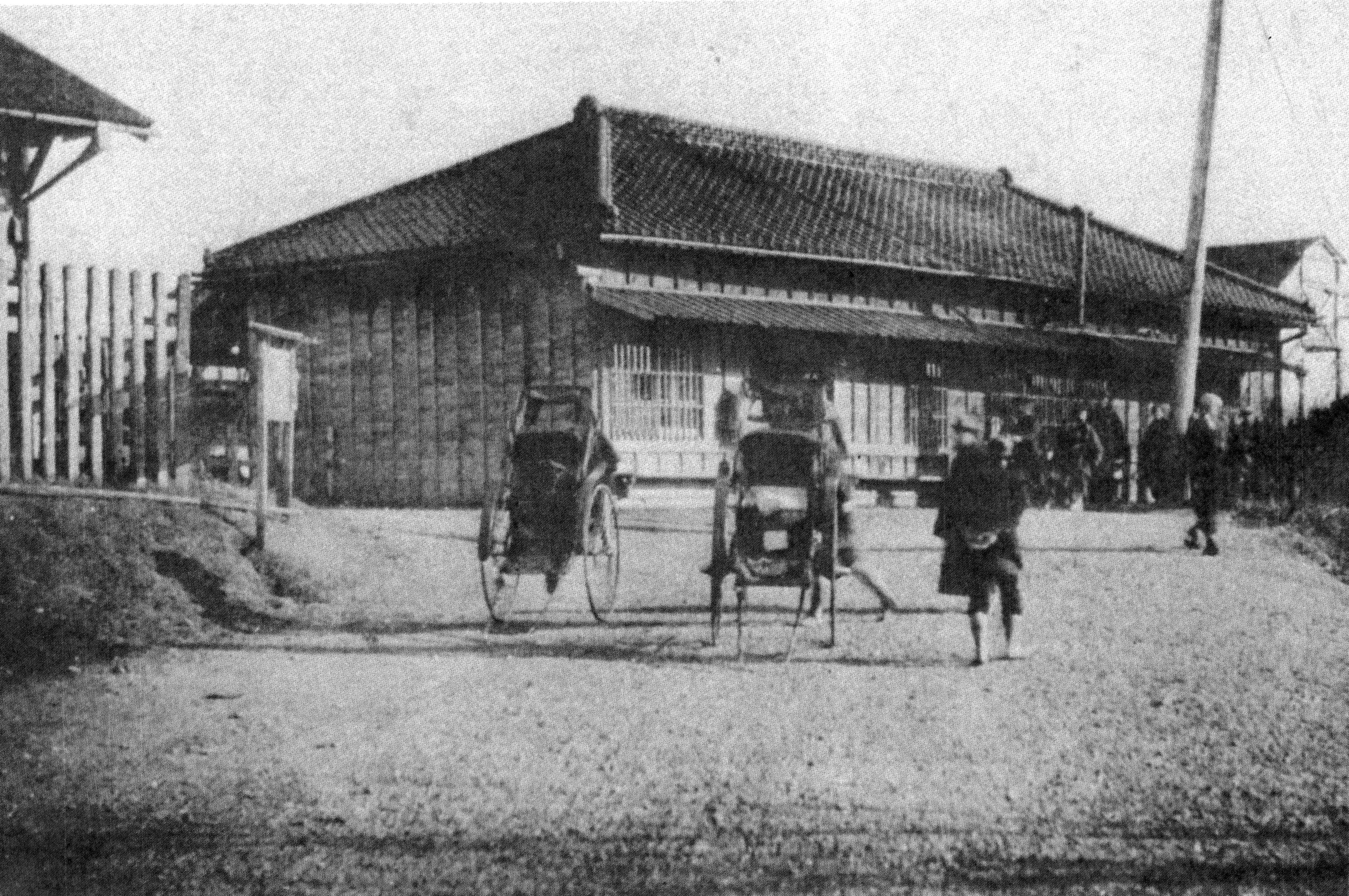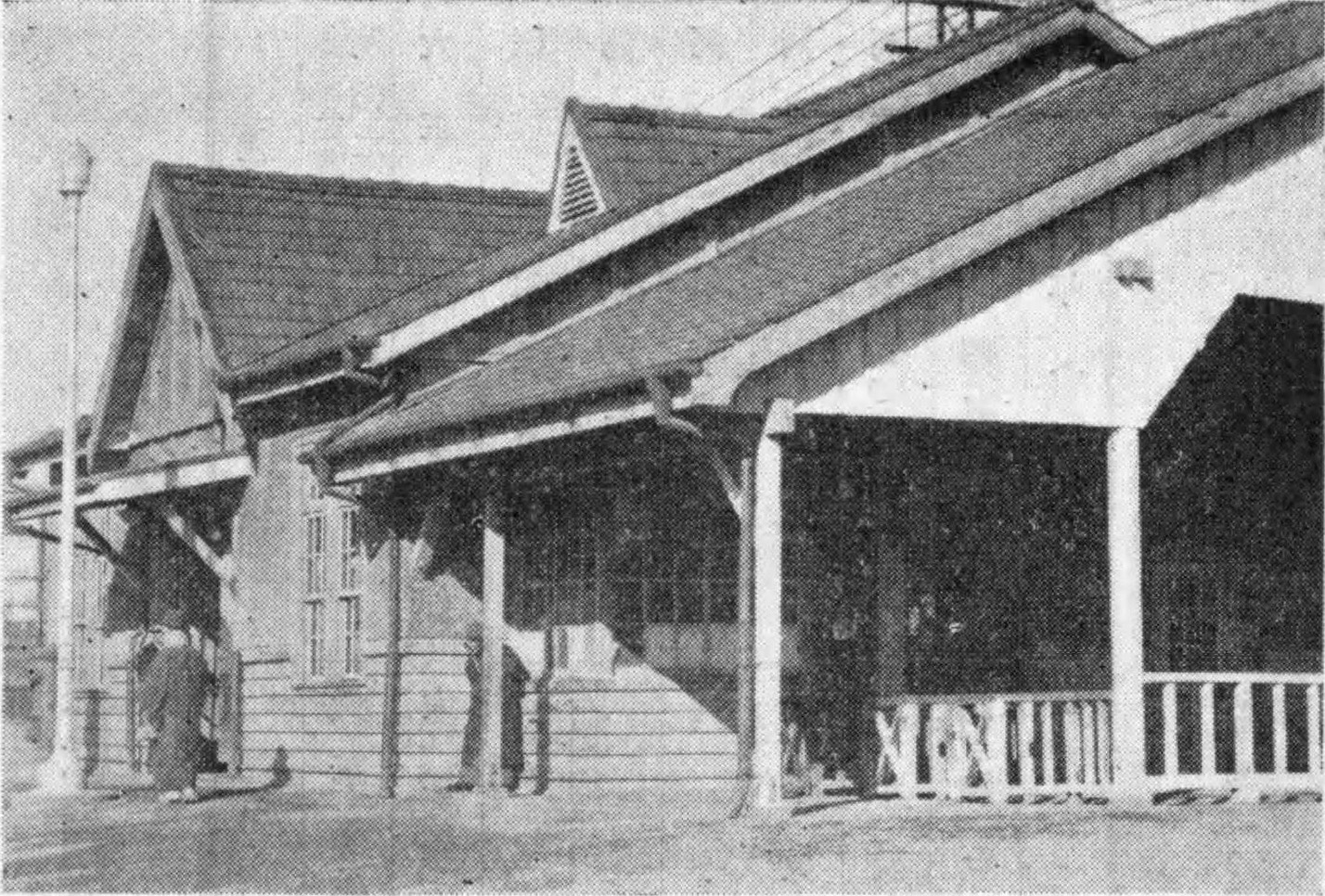Totsuka Station on:
[Wikipedia]
[Google]
[Amazon]
The Totsuka Station ( ja, 戸塚駅, ) is an interchange passenger
File:JR_Totsuka_Station_Upper-Level_Gates.jpg, Ticket gates
File:JR_Totsuka_Station_Platform_1・2.jpg, Platforms 1 and 2
File:JR_Totsuka_Station_Platform_3・4.jpg, Platforms 3 and 4
File:戸塚駅地下鉄線改札.jpg, Ticket gates
File:Yokohama-municipal-subway-B06-Totsuka-station-platform.jpg, Platform

 Totsuka Station was opened on July 11, 1887 as a station on the
Totsuka Station was opened on July 11, 1887 as a station on the
JR Totsuka Station
Yokohama Subway Totsuka Station
{{ja-linecat, East Japan Railway Company Railway stations in Kanagawa Prefecture Railway stations in Japan opened in 1887 Yokosuka Line Blue Line (Yokohama) Stations of Yokohama City Transportation Bureau Shōnan-Shinjuku Line Tōkaidō Main Line
railway station
Rail transport (also known as train transport) is a means of transport that transfers passengers and goods on wheeled vehicles running on rails, which are incorporated in tracks. In contrast to road transport, where the vehicles run on a pre ...
located in Totsuka-ku, Yokohama
is one of the 18 wards of the city of Yokohama in Kanagawa Prefecture, Japan. As of 2010, the ward had an estimated population of 273,418 and a density of 7,640 persons per km2. The total area was 35.70 km2.
Geography
Totsuka Ward is loca ...
, Japan, operated by the East Japan Railway Company
The is a major passenger railway company in Japan and is the largest of the seven Japan Railways Group companies. The company name is officially abbreviated as JR-EAST or JR East in English, and as in Japanese. The company's headquarters are ...
(JR East) and the Yokohama City Transportation Bureau
The Yokohama City Transportation Bureau, legally the is the local government administrative agency in charge of public transport services in the city of Yokohama, Japan.
Subway operations
The Yokohama Municipal Subway consists of the following ...
.
Lines
JR Totsuka Station is served by theTōkaidō Main Line
The is a major Japanese railway line of the Japan Railways Group (JR Group) network, connecting and stations. It is long, not counting its many freight feeder lines around the major cities. The high-speed Tōkaidō Shinkansen largely parallel ...
, Yokosuka Line
The is a railway line in Japan operated by the East Japan Railway Company (JR East).
The Yokosuka Line connects Tokyo Station with in Yokosuka, Kanagawa. Officially, the name Yokosuka Line is assigned to the 23.9 km segment between and ...
and Shōnan-Shinjuku Line and is 40.9 kilometers from . The underground Blue Line station is 7.4 kilometers from the terminus of the subway line at ,
Station layout
JR Totsuka Station is a ground level station with twoisland platform
An island platform (also center platform, centre platform) is a station layout arrangement where a single platform is positioned between two tracks within a railway station, tram stop or transitway interchange. Island platforms are popular on ...
s serving four tracks, with an additional set of freight tracks on the west side. The platforms are connected to the station's two gates upstairs (over the tracks) and downstairs (underground). The station has a ''Midori no Madoguchi
, which stands for ''Multi Access (originally Magnetic-electronic Automatic) seat Reservation System'', is a train ticket reservation system used by the railway companies of former Japanese National Railways, currently Japan Railways Group (JR Grou ...
'' staffed ticket office. The Yokohama Subway station, connected with the JR underground concourse, has one underground island platform.
JR East platforms
Yokohama Municipal Subway platforms
History
JR East

 Totsuka Station was opened on July 11, 1887 as a station on the
Totsuka Station was opened on July 11, 1887 as a station on the Japanese Government Railways
The Japanese Government Railways (JGR) was the national railway system directly operated by the Japanese Ministry of Railways ( ja, 鉄道省, Tetsudō-shō, ) until 1949. It was a predecessor of Japanese National Railways and the later Japan Rai ...
(JGR), the predecessor to the post-war Japanese National Railways
The abbreviated JNR or , was the business entity that operated Japan's national railway network from 1949 to 1987.
Network Railways
As of June 1, 1949, the date of establishment of JNR, it operated of narrow gauge () railways in all 46 pref ...
(JNR). The station building was originally on the west side of the station. The east gate was added in 1937. The current building over the tracks was completed on March 26, 1969.
On March 15, 1930 when Yokosuka Line trains were replaced by electric multiple unit
An electric multiple unit or EMU is a multiple-unit train consisting of self-propelled carriages using electricity as the motive power. An EMU requires no separate locomotive, as electric traction motors are incorporated within one or a numbe ...
s, all Tokaido Line trains ceased to stop at Totsuka Station.
Before the Tokaido Line and Yokosuka Line were separated and the station became a junction of the two lines on October 1, 1980, the two lines used the same tracks, but only Yokosuka Line trains stopped at Totsuka Station. The current platforms 1 and 2 did not exist, and the platform 1 (now platform 3) served the Tokyo-bound Yokosuka Line, while line 2 (now line 4) served the away-from-Tokyo direction. Additionally, the current freight lines did not exist, with the old freight lines located where the current platforms 1 and 2 are. From March 1973 when one island platform was added, there were two island platforms, with platform 2 serving the Tokyo-bound trains, and platform 3 serving the other direction. The lines on platforms 1 and 4 were built, but were not used until 1980.
Originally, the station handled both passengers and freight. In 1923, a separate freight yard was completed as a part of the station to the north of the passenger platforms across the crossing with Tōkaidō Highway. All freight operations were discontinued from May 1970. As the addition of the new freight lines claimed the land of the bus terminal in front of the station's west gate, the bus terminal was relocated to the site of the former freight yard in July 1971. The bus terminal is now called the Second Bus Center and is distinguished from the larger Bus Center beside the Totsukana building on the same side of the station.
With the privatization
Privatization (also privatisation in British English) can mean several different things, most commonly referring to moving something from the public sector into the private sector. It is also sometimes used as a synonym for deregulation when ...
of the JNR on April 1, 1987, the station came under the operational control of JR East. Shōnan-Shinjuku Line trains and ''Narita Express
, abbreviated as N'EX, is a limited express train service operated in Japan since 1991 by East Japan Railway Company (JR East), serving Narita International Airport from various Greater Tokyo Area stations. Services run approximately half-hourl ...
'' limited express services began stopping at Totsuka Station from December 1, 2001.
The timetable was revised on March 18, 2007, so that Tokaido Line ''Acty'' rapid trains all stopped at this station. This resolved the confusing situation that existed before, when the Shonan-Shinjuku Line rapid and special rapid trains stopped at the station, but Tokaido Line ''Acty'' services did not. Before the change, it was also the only station for changing trains at which the ''Acty'' did not stop. As before, the Tokaido Line commuter rapid still do not stop at this station.
Yokohama Municipal Subway
The Blue Line of the Yokohama Subway connected to Totsuka Station from May 24, 1987 with temporary facilities. The permanent subway station was opened on August 27, 1989.Accidents
At 05:42 on December 15, 1923, local passenger train No. 21 to collided with the locomotive and a wagon of freight train No. 603, which was blocking the main line. Two locomotives and two wagons were overturned. As a result, the driver of train No. 603 was killed instantly and three passengers were slightly injured. The cause of the accident was asignalman
A signalman is a person who historically made signals using flags and light. In modern times, the role of signalmen has evolved and now usually uses electronic communication equipment. Signalmen usually work in rail transport networks, armed for ...
's carelessness according to the official record of the railway.
At 09:52 on July 27, 1939, about 500 workers of a nearby Nippon Kōgaku
(, ; ), also known just as Nikon, is a Japanese multinational corporation headquartered in Tokyo, Japan, specializing in optics and Photography, imaging products. The companies held by Nikon form the Nikon Group.
Nikon's products include cam ...
factory entered the track near the station to see off a colleague. The semi-express train No. 221 to hit some of them, killing eight and injuring seven.
Passenger statistics
In fiscal 2019, the station was used by an average of 112,598 passengers daily (boarding passengers only). In fiscal 2019, the Yokohama Municipal Subway station was used by an average of 44,137 passengers per day (boarding passengers only), making it the second busiest station on the Blue Line (after Yokohama) The daily passenger figures (boarding passengers only) for previous years are as shown below.See also
*List of railway stations in Japan
The links below contain all of the 8579 railway stations in Japan.
External links
{{Portal bar, Japan, Trains
*
Railway stations
Japan
Japan ( ja, 日本, or , and formally , ''Nihonkoku'') is an island country in East Asia. It ...
References
External links
JR Totsuka Station
Yokohama Subway Totsuka Station
{{ja-linecat, East Japan Railway Company Railway stations in Kanagawa Prefecture Railway stations in Japan opened in 1887 Yokosuka Line Blue Line (Yokohama) Stations of Yokohama City Transportation Bureau Shōnan-Shinjuku Line Tōkaidō Main Line